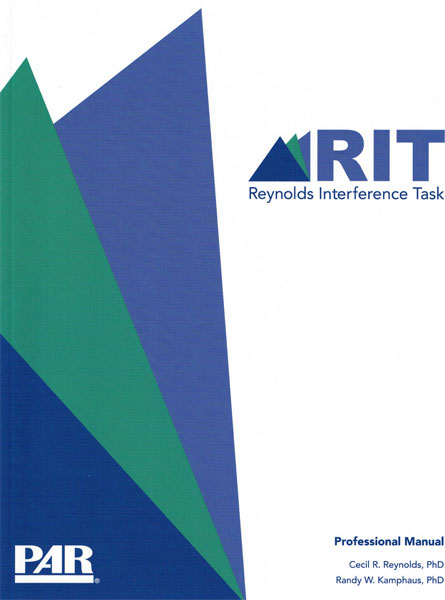Cecil. R. Reynolds, PhD, and Randy W. Kamphaus, PhD
Purpose: Measures complex processing speed
Age Range: 6 years to 94 years
Admin Time: 5 minutes to administer and score
Additional Details: Measure Complex Processing Speed to Determine Effects of TBI, Strokes, Dementia, and Concussions
Qualification Level: B
The RIT is a Stroop-style test of complex processing speed that measures general neuropsychological integrity. It adds a layer of cognitive processing tasks—inhibition and attention-shifting—to simple tasks, which makes them more complex and thus more indicative of cognitive flexibility and selective attention.
The RIT gives examiners full confidence in making accurate comparisons of performance using highly reliable scores derived from a common sample—it’s the best of all possible psychometric worlds.
—Cecil R. Reynolds, PhD, RIT coauthor
The mental effort required for the RIT allows clinicians to measure the effects of TBI, stroke, brain insult or injury, dementia, Alzheimer's disease, and brain tumours. Alternately, the RIT can be used as a measure of attention and complex processing speed deficits and as a rapid means of measuring recovery from concussion.
Features and benefits
- Features two subtests that combine to provide a Total Correct Index, which offers greater coverage, enhanced consistency, and more reliability than a single subtest.
- Includes reliable change scores and discrepancy scores with the Reynolds Intellectual Assessment Scales, Second Edition (RIAS-2), a trusted measure of intelligence.
- Covers a wide age range (6-94 years) in one test.
- Requires minimal motor demand.
- Takes just five minutes to administer and score.
- Administer with paper and pencil.






